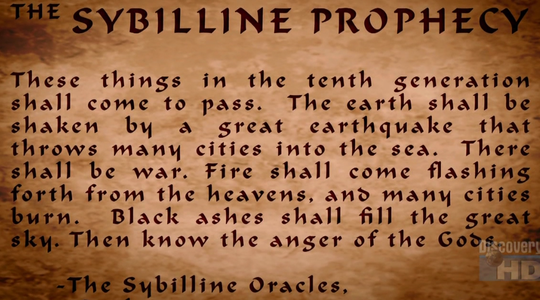Written By Lesallan
Ohio Christian University
BIB3510 Gospels: Luke (ONLF23)
Professor Daniel Rickett
August 23, 2023

How Reliable Are the Christian Gospels – Comparison with Non-Canonical Sources
The Christian Gospels of Matthew, Mark, Luke, and John (ESV) are the primary historical sources for the life and teachings of Jesus Christ, the founder of Christianity. They are based on eyewitness testimony and oral tradition that date back to the first century A.D. However, they are not the only ancient writings that mention Jesus or his followers. Some non-Christian or non-canonical sources provide some additional or corroborating information about some aspects of the Christian faith. Here is a brief comparison of these sources with the Christian Gospels:
Josephus was a Jewish historian who wrote in the late first century A.D. (Flavius Josephus, 1999). He mentions Jesus twice in his work Antiquities of the Jews. In one passage, he calls Jesus “a wise man” who “was the Christ” and who “appeared to them alive again the third day.” In another passage, he refers to James as “the brother of Jesus, who was called Christ” (Flavius Josephus, 1999). These passages confirm that Jesus was a real person who was considered the Messiah by some Jews and who had a brother named James. They also support the Christian belief in Jesus’ resurrection, although Josephus did not believe in Him.
Tacitus was a Roman historian who wrote in the early second century A.D. (Tacitus)/Book 15, 2023). He mentions Jesus in his account of the great fire of Rome in A.D. 64, which Emperor Nero blamed on the Christians. He says, “Christus, from whom the name had its origin, suffered the extreme penalty during the reign of Tiberius at the hands of one of our procurators, Pontius Pilatus” (The Annals (Tacitus)/Book 15, 2023). This passage confirms that Jesus was executed by Pontius Pilate under Tiberius Caesar, as reported by the Christian Gospels. It also shows that Christianity had spread to Rome by the mid-first century A.D.
Suetonius was a Roman biographer who wrote in the early second century A.D. (The Lives of the Twelve Caesars/Claudius., 2019). He mentions Jesus indirectly in his biography of Emperor Claudius, who reigned from A.D. 41 to 54. He says that Claudius “expelled from Rome Jews who were making constant disturbances at the instigation of Chrestus” (The Lives of the Twelve Caesars/Claudius., 2019). Most scholars identify Chrestus as a misspelling of Christus and interpret this passage as referring to conflicts between Jews and Christians over the identity of Jesus as the Messiah. This passage confirms that Christianity had reached Rome by the mid-first century A.D. and that it caused controversy among the Jewish community there. It also corroborates the Acts of the Apostle’s statement that Claudius expelled all Jews from Rome.
Pliny the Younger was a Roman governor who wrote in the early second century A.D. (Pliny the Younger, 112 C.E.). He mentions Jesus indirectly in his letter to Emperor Trajan, asking for advice on how to deal with Christians in his province of Bithynia (in modern Turkey). He says he interrogated some Christians who confessed that “they were accustomed to meet on a fixed day before dawn and sing responsively a hymn to Christ as to a god.” He also says they “bind themselves by oath, not to some crime, but not to commit fraud, theft, or adultery” (Pliny the Younger, 112 C.E.). The historical passage affirms Christians’ veneration of Jesus as God and their adherence to his moral lessons. Additionally, it indicates the early arrival and expansion of Christianity in Asia Minor during the second century A.D.
The Gospel of Peter is a non-canonical gospel discovered in 1886 in Egypt. It is dated to the late second or early third century A.D. (Robinson, et al., 2021). It contains an account of the passion and resurrection of Jesus that differs from the Christian Gospels in several details. For example, it describes Jesus’ cross speaking, and two giant angels coming out of the tomb with him. It also shifts the blame for Jesus’ death from the Romans to the Jews and denies that Jesus suffered any pain on the cross (Robinson, et al., 2021). Most scholars regard this gospel as a late and unreliable source reflecting a view of Jesus that denies his humanity and suffering and shows an anti-Jewish bias.
The Gospel of Thomas is a non-canonical gospel discovered in 1945 among the Nag Hammadi texts in Egypt. It is dated to the late second or early third century A.D. It contains 114 sayings attributed to Jesus, some similar to those found in the Christian Gospels and some unique or gnostic and based on secret knowledge (Coptic Gnostic Library, n.d.). Most scholars regard this gospel as a late and unreliable source that reflects a view of Jesus that emphasizes his hidden wisdom and rejects his incarnation, death, and resurrection.
The Christian Gospels are more reliable than the other non-canonical sources listed above because they are closer in time and content to the life and teachings of Jesus. While providing some confirmation or information about Jesus or his followers, the other sources are either later in date, less in detail, or more in error than the Christian Gospels. Therefore, they should be used with caution and criticism and not as substitutes for the Christian Gospels. For three reasons, the non-canonical Gospels of Peter and Thomas are less reliable than the canonical Gospels. They were written much later, contain legendary elements that contradict historical context and do not meet authenticity criteria. These Gospels lack the early sources and reflect later Christian agendas rather than the original teachings of Jesus.
The canonical Gospels, Matthew, Mark, Luke, and John (ESV) are the primary sources for understanding the historical Jesus. They contain eyewitness testimony, oral tradition, and written sources that date back to the first century A.D. They also provide the most comprehensive and coherent account of His life and ministry, revealing his identity as the Son of God, the Messiah, and the Savior of the world. Without them, our picture of who Jesus is would be limited and fragmented. Besides the canonical Gospels, there are non-canonical gospels like the Gospel of Thomas, and Peter. These gospels offer alternative information about Jesus and are dated later than the canonical ones. They are not always considered reliable but can offer insight into different groups’ understanding of Jesus in the early centuries of Christianity.
It is worth noting that several sources outside of the Christian faith reference Jesus or His followers. These sources include Jewish writers like Josephus and Philo, Roman writers like Tacitus and Pliny the Younger, and Greek writers like Lucian and Celsus. While these sources do not delve into great detail or provide an overly optimistic evaluation of Jesus, they confirm His historical existence and various aspects of his life and death. Moreover, it is imperative to note that these accounts provide a valuable understanding of the perception of Jesus by individuals outside of His inner circle. Additionally, they reveal crucial information regarding the dissemination of His teachings across various cultures and regions.
To truly comprehend the historical Jesus, we must utilize both the canonical Gospels and alternative sources critically and comparatively. We must thoroughly examine their historical context, the literary genre, source material, authorship, purpose, the audience, perspective, reliability, accuracy, consistency, and significance. Their evidence must be carefully weighed, and their claims must be subjected to critical evaluation. It is crucial to recognize their strengths and weaknesses as historical sources, appreciate their diversity and complexity as theological interpretations, and seek their meaning and relevance for our own lives as followers of Jesus.
References:
Coptic Gnostic Library. (n.d.). Gospel of Thomas (Lambdin Translation) — The Nag Hammadi Library. Www.gnosis.org. http://www.gnosis.org/naghamm/gthlamb.html
Flavius Josephus. (1999). The new complete work of Josephus, trans. William Whiston. Grand Rapids, Mi.; Kregel Publications.
Pliny the Younger. (112 C.E.). https://ebooks.adelaide.edu.au/p/pliny-the%20younger/letters-of-pliny-the-younger/chapter207.html.
The Annals (Tacitus)/Book 15. (2023, March 31). In Wikisource. https://en.wikisource.org/w/index.php?title=The_Annals_(Tacitus)/Book_15&oldid=13108954
The Lives of the Twelve Caesars/Claudius. (2019, October 16). In Wikisource. https://en.wikisource.org/w/index.php?title=The_Lives_of_the_Twelve_Caesars/Claudius&oldid=9654733
J. Armitage Robinson, & Various. (2021, December 21). Ante-Nicene Fathers Vol. IX, The Gospel of Peter. Wikisource. https://en.wikisource.org/w/index.php?title=Ante-Nicene_Fathers/Volume_IX/The_Gospel_of_Peter/The_Gospel_According_to_Peter&oldid=11980428


